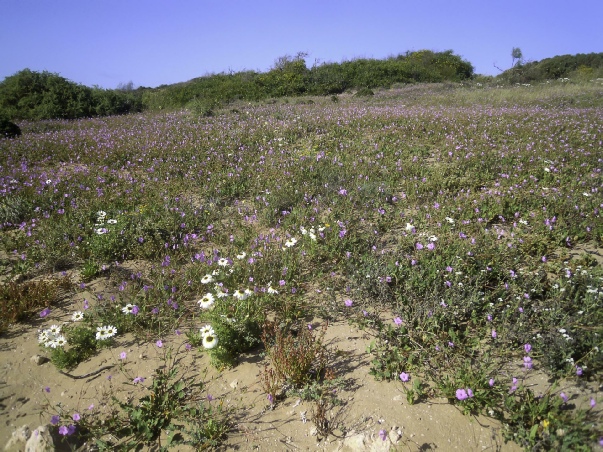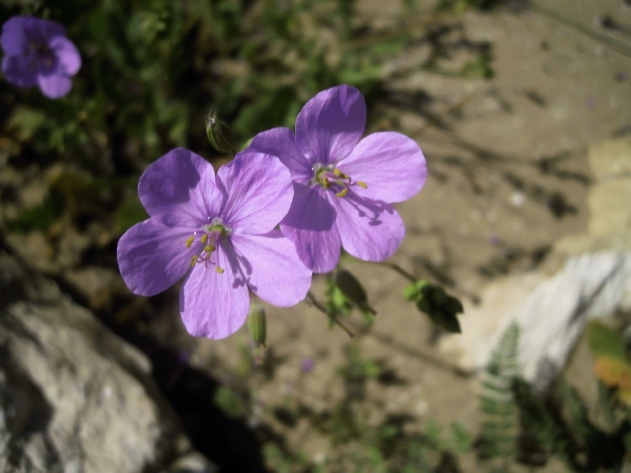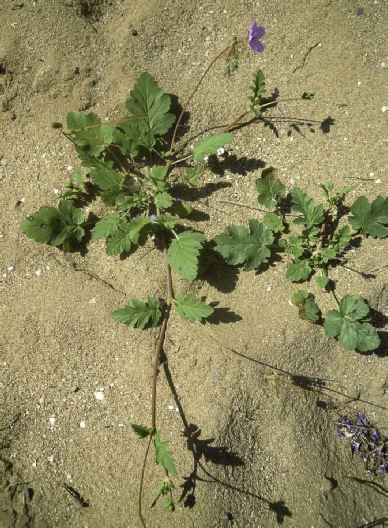Erodium
and California
This site was created and is maintained by Benjamin Coultrup.
Photos all ©Benjamin Coultrup unless otherwise indicated, 1984-
Clade I, Subclade 1
Subgenus Erodium
Clade I, Subclade 2
Subgenus Barbata
Clade II, Subclade 3
Clade II, Subclade 4
-
-



Erodium hesperium (Maire)H.Lindb.
Perennial; root not tuberous.
Leaves: Leaves, grey-
Inflorescence: Annual flowering stems grow out rather horizontally; bracts narrow, free, finely hairy; umbels of 4-
Fruit: rostrum 4-
Distribution: endemic to S. W. Morocco, Agadir, in dunes
Erodium hesperium; on dunes near the mouth of the river Massa; Photo credit: Philippe Geniez; licensed under the Creative Commons Attribution-
Erodium hesperium; on dunes near the mouth of the river Massa; Photo credit: Philippe Geniez; licensed under the Creative Commons Attribution-
Erodium hesperium; on dunes near the mouth of the river Massa; Photo credit: Philippe Geniez; licensed under the Creative Commons Attribution-